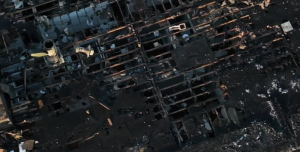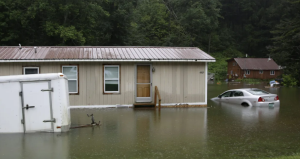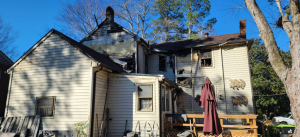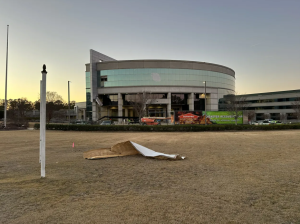
In addition to causing a loss of nearly $3 million, the July floods that caused Morrisville Water & Light’s customers to be thirsty for a whole week also ravaged its infrastructure.
According to Scott Johnstone, the general manager of utility, this estimate doesn’t include costs to prevent future flooding. This could be at least an additional $1 million.
Johnstone stated that “these figures are alarming”.
The Federal Emergency Management Administration will pay for 75 percent of flood-related costs, but the remaining 25 percent will fall to the utility. It will absorb the cost through their rates. Johnstone stated that the state will not allow the utility to raise rates in order to pay for expenses related only one time events. It already increased them last spring.
He said, “Now, this becomes a new problem because you have to pay your bills.”
The flood of 10-11 July was a major disaster for the Vermont Agency of Natural Resources. Although there was an immediate threat after the Lamoille river overflowed Morrisville Water & Light’s main drinking water source, the majority of damage occurred downstream at the two hydroelectric dams of the utility.
Johnstone said that the flooding cost $1.9 million between the village dam in Cady’s Falls and his own. The dams are still mostly inactive nearly four months later. Johnstone said that the village dam generates “a tiny bit” of power, but it’s not much.
The utility has to buy more electricity on the market because the two other dams are damaged.
The sheer amount of water that was rushing through the dams would have caused some serious damage, he said.
He said, “We were aware that four feet of water was flowing over both Morrisville’s and Cady’s Falls Dams.” Not the spillways. “Over the top of dam.”
After the floodwaters receded, crews assessed the damage and found most working components of hydroelectric production damaged.
Debris has been piled to the top of the tail race, which is normally used to transport water from the dam. Johnstone says that the openings are about 20 by forty feet.
Penstocks on Morrisville Dams are also clogged with sediment from riverbeds. Johnstone believes that the debris comes primarily from Oxbow Riverfront Park.
All of this must be dug out before dams can again be ignited.
He said, “I believe that by December we will have most of them running again.”
The drinking water wells were also damaged by the flood. They sustained damage worth around $800,000. It was this primary well that the Agency of Natural Resources had to shut down during the flooding, forcing Morrisville to announce its “Do Not Drink” order. Morrisville is one of two towns to have issued the Do Not Drink Order during the 10-11 July flood.
Morrisville was under an order for four days and a boil-water notice the next. Johnstone reported that the phone lines of the utility were ringing nonstop from angry customers. Businesses either closed for a couple of days, or invested a lot in obtaining potable water. Private industry, such as local well drillers Manosh Corporation, and churches provided water in thousands of gallons to various pickup spots.
It was the backup well of the utility that suffered the most damage. Both are located in the Lamoille river floodplain, off Route 15A. Johnstone said that the well was completely submerged.
He also said that the shape of the Tenney Bridge caused a sort of whirlpool that resulted in a hole 50 feet deep nearby.
Johnstone stated, “We are not sure if that backup well will be viable in the future.”
It’s unclear to him whether this is a major issue, given that the main well provides so much water and the state doesn’t have much money for a backup well.
He said that FEMA has funds available for flood mitigation in the future. Recently, he began talking to the federal government about moving the backup water well.
Johnstone says that there is already funding for $1 million in mitigation projects awaiting FEMA, and these projects will start next spring.
The utility also reported damage of approximately $140,000 to the electrical grid. Poles were washed out and cables snapped all over the system. In the aftermath of flooding, he said that line crews had been busy repairing 35 grid projects.
It could have been much worse. The village’s wastewater treatment plant was damaged to the tune of $25,000, but it would still be a lot better than what happened.
Johnstone stated, “We were only six inches from a major accident.” Johnstone said, “literally six inches.”
Johnstone says that although Morrisville suffered expensive damages, it was not as bad as the Lamoille River’s neighbors in Hardwick or Johnson, to the south and north. Johnson for example, has lost almost its entire wastewater treatment facility.
The fact that there were no breaches in the dams is also impressive.
He said, “I believe we are lucky the dams have held up.” It just shows that dams built in 1895 were pretty sturdy.
It is important to restore your property after a water incident. Water damage restoration professionals offer comprehensive services, such as water removal, drying, mold remediation and structural repairs. Water damage restoration will ensure that the damage to your home is minimised and it is quickly restored back to its safe, habitable state. To protect your home and maintain a safe and healthy living environment, you need to act quickly and seek professional help. Are you looking for solutions to your problem? Well, if you want to know more, you can go right here so that you can verify for yourself the multiple options to deal with your problem Imperial Restoration water and flood damage restoration Toronto.





